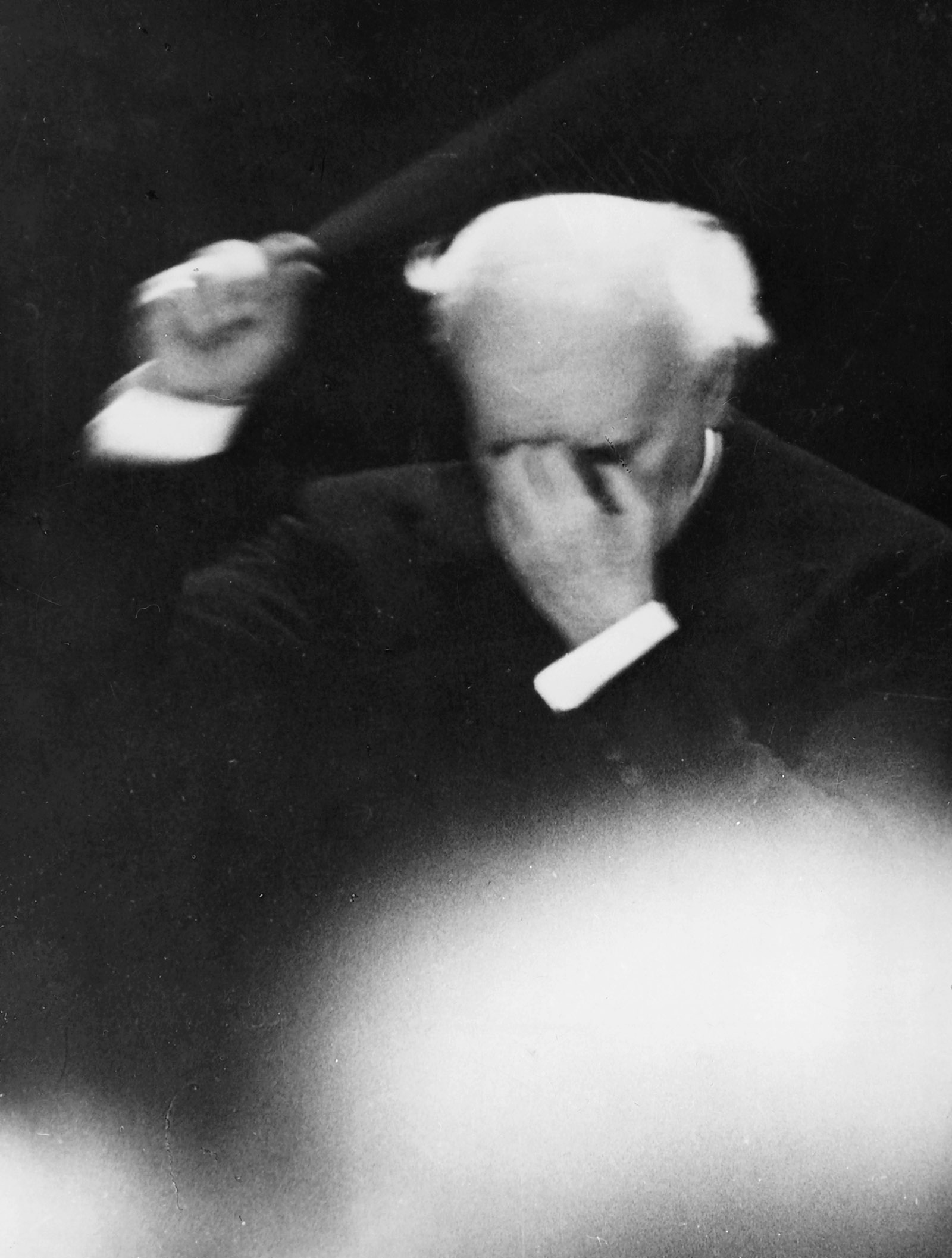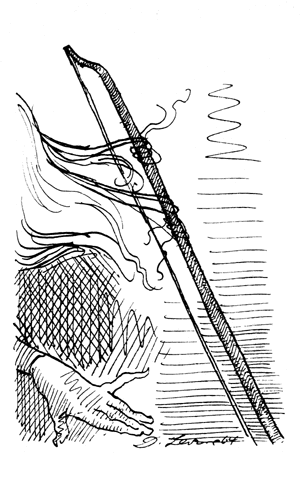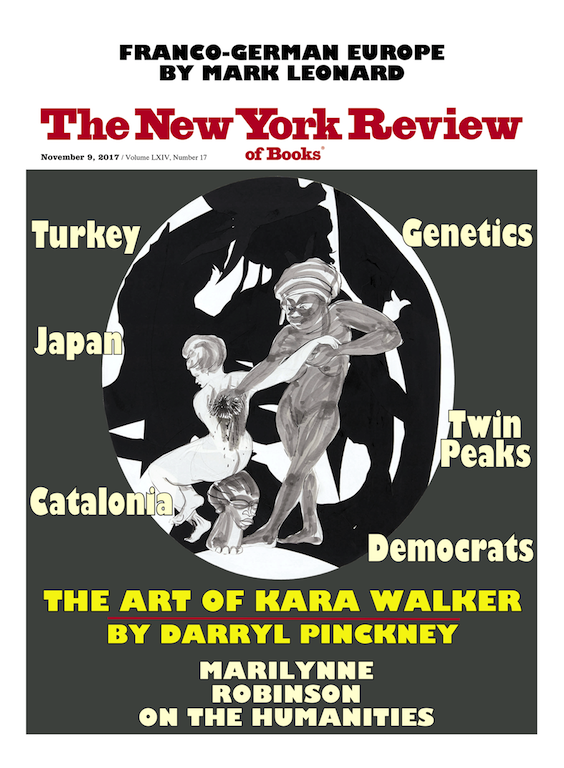Biographers are understandably tempted by the idea of revisiting their subjects. In the years after a life story is completed, doors open and new details, clarifications, and documents become available. Myths are dispelled and mysteries solved—or deepened. As time and reflection leave their marks, we feel there may be something else to say.
When Harvey Sachs’s Toscanini was published in 1978, it was greeted as the most serious portrait of the conductor that had yet appeared, a judgment that has largely remained unchallenged. But an enormous amount of material about Toscanini has come to light in the past four decades, including roughly 1,500 personal letters as well as numerous tape recordings of him in private conversation with friends and relatives. Previously underexamined archives at La Scala, the Metropolitan Opera, and the New York Philharmonic—places where he reformed musical standards—have been opened to Sachs, as have the papers of the Mussolini government in Fascist Italy, which recognized the conductor as an implacable enemy early on and kept voluminous notes on him. “In short,” Sachs writes in his preface to Toscanini: Musician of Conscience,
this book is a completely new biography, not a revision or an expanded version of the earlier book. Apart from quotations from other sources, I don’t believe that a single entire sentence from the old book is to be found in this one. I have examined new sources, reexamined old ones, and produced what I hope is a close-to-definitive account of a long life filled with artistic, personal, and political drama….
Toscanini’s was a ninety-year life that began before the invention of the phonograph and the incandescent light bulb and ended at the dawn of the space age; an eighty-year musical immersion that began before Wagner and Verdi had written their final masterpieces and that ended in the era of Boulez and Stockhausen; a sixty-eight-year career, carried out in twenty European, North and South American, and Middle Eastern countries; and a private existence that was torn between love of family and erotic restlessness.
Sachs’s lifelong studies (his fascination with the conductor dates from his teens and he is now in his seventies) have paid off in his gigantic and extraordinary new book. Indeed, I cannot think of another biography of a classical musician to which it can be compared: in its breadth, scope, and encyclopedic command of factual detail it reminds me of nothing so much as Robert A. Caro’s The Power Broker. I once described Caro’s book jokingly as “1,366 pages about the man who built the Cross-Bronx Expressway” (among the book’s multiplicity of tales about Robert Moses, the sixty-some pages devoted to that unfortunate construction stand out in their horrible fascination). But The Power Broker attracted a passionate group of readers who never suspected that they were interested in city planning, public transportation, New York politics, or the development of Long Island until Caro transformed these subjects into something epic and thrilling.
Those who read Toscanini: Musician of Conscience will be rewarded in much the same way, with stories about everything from the history of Italy and the rise and fall of fascism to sexual experiences and backstage opera gossip from one hundred years ago. But a master narrator is required to make them come to life, and that is what Sachs has now proven himself to be. For example, here is his description of Toscanini’s first home in New York, a famous building that still stands today:
He was housed, at his own expense, in a suite in the four-year-old Beaux Arts–style Ansonia, one of the newest and most luxurious residential hotels in the world, located on Broadway between West Seventy-Third and West Seventy-Fourth Streets in what was then a relatively quiet section of town. It contained tearooms, restaurants, a ballroom, Turkish baths, and a lobby fountain with live seals. Each apartment was high-ceilinged and elegantly turned out, with bay windows that provided grand views either along Broadway or across the Hudson River. There were several bedrooms, a parlor, a library, and a dining room in every suite and each of the eighteen-story building’s residential floors had a central kitchen with connecting “serving kitchens”: the residents’ personal cooks could use the central kitchen and then serve meals in their bosses’ own apartments.
A page later he writes of Toscanini’s first rehearsal at the Met in 1908:
The players had heard stories about Toscanini’s memory, but there was general astonishment when he began to rehearse Wagner’s gigantic work [the four-hour Götterdämmerung] in detail without consulting the score. And the astonishment grew as the new conductor began to hear and correct errors in the musicians’ printed parts that well-known German conductors had never detected. Still more impressive was the way in which he immersed his co-workers in the very substance of the music; at one point, the orchestra spontaneously broke into applause, bravos and a fanfare.
Sachs seems to know everything about his subject and his times, and there are marvelous, learned asides such as “Nietzsche, who had been living in Turin, would almost certainly have heard Toscanini conduct Carmen there in the spring of 1889 had he not lost his sanity and collapsed on the city’s streets the previous January.” And there is never any doubt that he has chased his stories as far as they will lead. “The [1906–1907 La Scala] season was to have closed with the local premiere of Massenet’s recent Le Jongleur de Notre-Dame; when this project fell through, for reasons no longer known, a remounting of Cavalleria Rusticana was scheduled in its stead.” “For reasons no longer known”—we can be sure that Sachs has looked for them.
Advertisement
Toscanini had been the first cellist of a traveling Italian opera company in 1886; when the group’s conductor suddenly quit, the nineteen-year-old was asked to take over Aida in Rio de Janeiro. He saved the tour: over the next six weeks, he led twenty-six performances of twelve operas, all of them from memory. He returned to Italy, and to the cello, for the world premiere of Verdi’s Otello in 1887. In 1896, he conducted the first performance of Puccini’s La Bohème (he would live to record the work fifty years later) and then became the principal conductor at La Scala, Italy’s leading opera house then as now, where the aesthetic that would guide him for the rest of his life took hold. Sachs sets the scene:
In Toscanini’s youth, opera was hugely popular in Italy: in the northern half of the country and in many parts of the south virtually every town big enough to have a weekly farmers’ market also had a theater. But quality was uneven, to put the matter mildly, and notwithstanding the battles that Verdi and some of his contemporaries had waged to make opera a convincing combination of music, poetry and drama, the form remained, for the general public, essentially an arena for the display of vocal technique. Singers told the conductor how they wanted their arias done, although they might change their interpretations from one performance to another, and the orchestra was rehearsed just enough to ensure that the musicians would stay more or less together and play in the same key, since transpositions were frequent.
And so the young conductor banned virtually all encores, ensuring more unified performances but depriving star singers of additional moments to shine. (He was once challenged to a duel for his trouble.) He insisted that the musicians who played in the rehearsals be the same ones who played the actual performances, and they were paid accordingly. “Toscanini decided that the status quo was not good enough,” Sachs writes.
The more experience he gained, the less willing he was to accept complacency. He could rehearse patiently for hours if he sensed that his musicians and singers were working at maximum capacity, but if he suspected otherwise he would become a fury, breaking batons, screaming obscenities, tearing up scores, knocking over his music stand, and hurling insults at the offenders. Singers sometimes emerged from his coaching sessions in tears, and orchestra players left rehearsals wrung out from tension and exhaustion.
Yet no one could convincingly accuse him of carrying on as he did purely out of self-interest or vanity. Here was a conductor who did not make exaggerated gestures to impress the public, who seemed to want to run away from applause, who spent his days in coaching sessions, staging rehearsals, chorus rehearsals, orchestra rehearsals, and ensemble rehearsals, and who stayed up nights absorbing new scores or trying to penetrate deeper into old ones. Many people resented, even detested, this superdemanding young conductor, but others realized that the tension and exhaustion of the struggle to achieve an artistic goal were far better than the anesthetizing boredom of mediocrity.
Most of the repertory Toscanini conducted was then new, and Sachs explores the works of the “verismo” composers who dominated the Italian opera houses of the time and whose works are still popular today. He remembers that Ruggero Leoncavallo, best known for his Pagliacci, wrote his own La Bohème, too—and he has even listened to it. He speaks knowingly of the obscure operas Mascagni wrote after Cavalleria Rusticana and of the music of Umberto Giordano, Francesco Cilea, Ermanno Wolf-Ferrari, and Toscanini’s beloved mentor, the short-lived Alfredo Catalani, who is remembered now mostly for a single rapt aria, “Ebben! Ne andrò lontana,” from his opera La Wally.
But Toscanini also looked to the past for works that might be revived, thereby helping to establish the present-day repertory. “Turn-of-the-twentieth-century audiences at major Italian theaters like the Regio [in Turin] and La Scala considered themselves too sophisticated for mid-nineteenth-century Verdi standards like Rigoletto, Il Trovatore, and La Traviata,” Sachs explains. “Tunes from the old ‘stock operas’ were played by street-corner hurdy-gurdy grinders, sung by drunks in taverns, and mimicked in vaudeville acts; catchphrases from their stilted libretti were used jokingly in everyday conversation; and forty or fifty years before the Marx Brothers wreaked havoc on Il Trovatore in A Night at the Opera (1935), the work was already an object of satire in Italy.” As the conductor Tullio Serafin put it: “When Toscanini decided to bring Trovatore back to La Scala, where it hadn’t been done for some time, the great concern was to make sure that the audience didn’t laugh.”
Advertisement
Unlike many artists and musicians, Toscanini met the grave political challenges of his day bravely and head-on. He refused to conduct the Fascist anthem “Giovinezza” at a concert in Bologna in 1931, after which he was beaten by some of Mussolini’s thugs and temporarily deprived of his passport. He left Italy in 1938 and did not return until after World War II. Although he had been the first non-German to conduct at the Bayreuth Festival, he broke off all relations with Richard Wagner’s temple of self-worship in 1933 to protest its coziness with the Hitler regime, and he never conducted again at the Salzburg Festival after Germany annexed Austria in 1938.
Toscanini was civil to most of his fellow conductors, even when he did not approve of their methods of making music. One notable exception was Leopold Stokowski, whom he considered a “great charlatan” (one senses that Sachs, too, disapproves). He was generous with younger musicians, including Guido Cantelli, Carlo Maria Giulini, and Leonard Bernstein, the last of whom once had the temerity to suggest that there were irreconcilable tempo differences between Toscanini’s live and recorded versions of Berlioz’s Roméo et Juliette. The older conductor thought about the question, listened to the performances again, and then agreed with Bernstein, sending him a charming note.*
In the United States, Toscanini was best known for his performances of symphonic music: indeed, he never conducted a staged performance of any opera here after he left the Met in 1915. In 1934, some nine million people—over 7 percent of all American men, women, and children—tuned in to his New York Philharmonic concerts on Saturday nights. After his eight-year tenure with the Philharmonic ended in 1936, he was invited to present concerts on the radio with the newly formed NBC Symphony Orchestra, and these are the source of most of his familiar recordings.
And then, in 1948, he began a series of live TV concerts, where he suffered from the heat and blinding brightness of the floodlights (some of the players wore dark glasses). It was a time when only one in ten Americans had even seen a television set, but the telecasts gave a sense of new possibilities to the medium, and they have been easily available for home viewing since the early 1990s. They are both invigorating and—for anybody who has ever played or sung under any conductor—more than a little discomforting. After a brusque, awkward acknowledgment of the applause, Toscanini sets to work, fiercely attentive. His eyes roam over the musicians incessantly, and are quick to flash disapproval if anything goes awry. The most subtle signal to slow down or play more quietly is reflexively obeyed. We feel his firm control sixty years after his death.
Toscanini has been portrayed as a strict Puritan, ferocious in his fidelity to the score. The word most often used to describe his philosophy of conducting is “literalist”—yet what literalist would invariably summon the entire cello section of any orchestra he conducted to expand the great solo passage that opens Rossini’s William Tell Overture? There was also a legend that he conducted everything briskly, yet as Sachs observes, much of his only recorded performance of Mozart’s Die Zauberflöte might almost be described as contemplative, and his Parsifal at Bayreuth was one of the slowest in the festival’s history.
Yet it is true that he was infuriated by indulgences that were not carefully considered—whether that meant a tenor holding a high note longer than requested or a string section slipping and sliding from one note to another. He demanded that scores, whether or not they were always obeyed in every detail, at least be taken seriously and that all their elements be played as part of a larger whole. Toscanini only heard Maria Callas sing at the beginning of her career and was not especially impressed. Still, he would have applauded her didactic response to a hapless student who made a hash of a passage from Il Trovatore and defended her transgression by explaining that the passage was a “cry of despair.” “It’s not a cry of despair,” came the withering reply. “It’s a B-flat.”
Sachs is a passionate advocate of Toscanini’s interpretative philosophy, as one would expect. His criticisms are mostly gentle, but they are perceptive. He rightly acknowledges that Toscanini’s recording of La Traviata is generally too fast, that the casting of some others among his complete operas is curious and sometimes unsatisfying, that the acoustics in NBC’s Studio 8H are dry and unforgiving (the orchestra’s move to Carnegie Hall helped matters enormously), and even that one of his Beethoven recordings has a “breakneck” tempo. (He makes no comment on the Haydn “Surprise” Symphony, in which the third movement is so abrupt and clattering as to be almost comical.)
Some of us will always prefer our Beethoven, Schubert, and Brahms conducted in a more spacious and leisurely manner, imbued with what the Germans call Innigkeit (inwardness), than was Toscanini’s norm. So be it: one of the great merits in Sachs’s criticism is its lack of dogmatic insistence. He is not here to win old arguments, but rather to state his considered thoughts, generously and thoroughly, and let the reader take it from there.
“Whatever you may think about Toscanini’s interpretation of a specific work,” the Cleveland Orchestra’s George Szell once observed, “that he changed the whole concept of conducting and that he rectified many, many arbitrary procedures of a generation of conductors before him, is now authentic history.” This is certain, and never before has that history been told so well.
This Issue
November 9, 2017
Black Lives Matter
What Are We Doing Here?
Small-Town Noir
-
*
It should be remembered that Toscanini was one of Berlioz’s great champions, at a time when the composer was known almost exclusively for one piece, the Symphonie Fantastique. In fact, Toscanini never performed it in full, though he left meticulously controlled but deeply passionate performances of Roméo and Harold in Italy. One can only imagine what he would have done with Les Troyens. ↩




